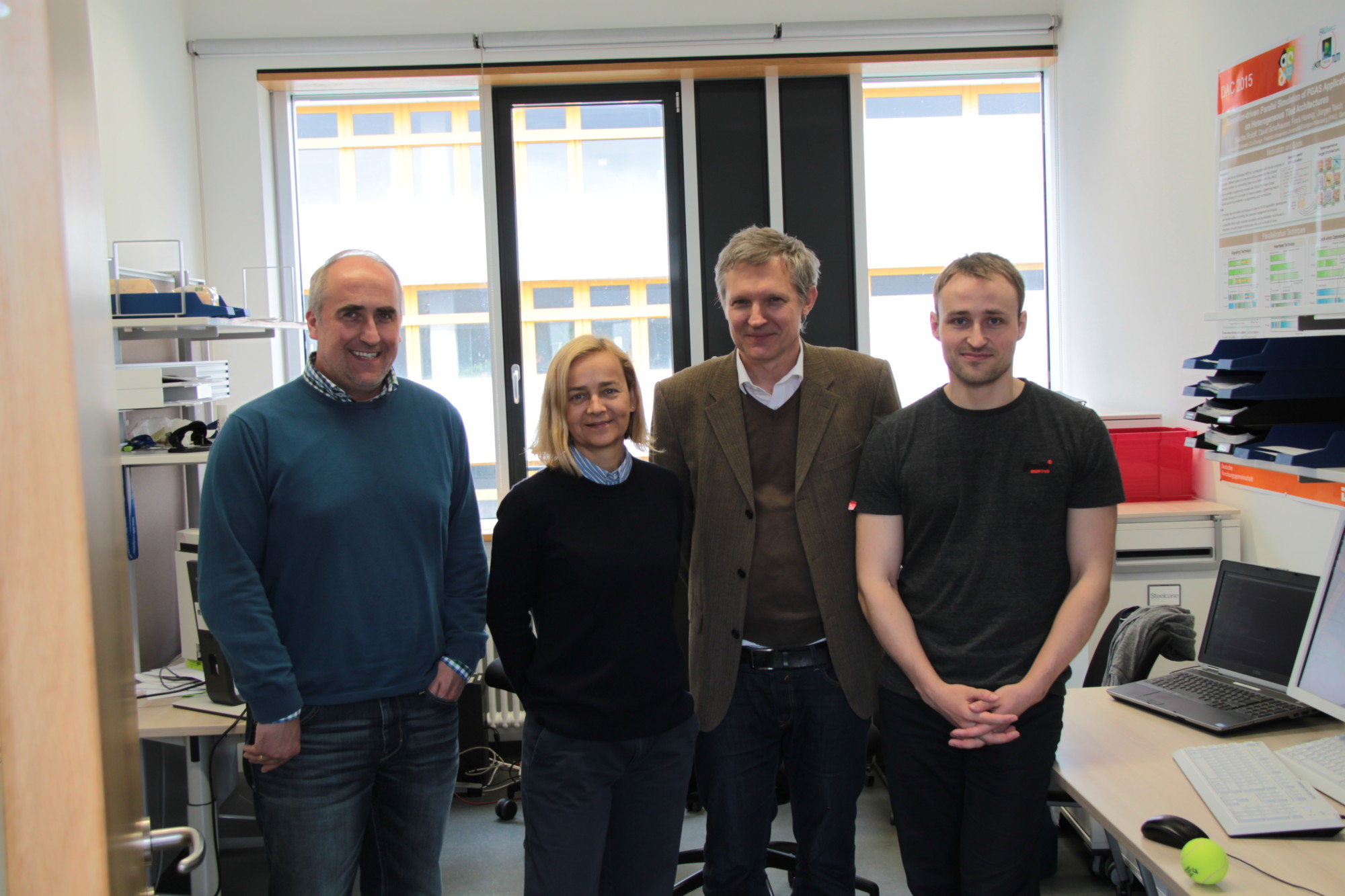05.05.2017 Talk of Prof. Donatella Sciuto, Politecnico di Milano
As part of the SFB/TRR 89 “InvasIC” Seminar, Prof. Donatella Sciuto, Politecnico di Milano, gave a guest lecture with the title “Designing autonomic heterogeneous computing architectures: a vision”.
Abstract:
The resources available on a chip such as transistors and memory, the level of integration and the speed of components have increased dramatically over the years. Even though the technologies have improved, we continue to apply outdated approaches to our use of these resources. Key computer science abstractions have not changed since the 1960’s. Operating systems and languages we use were designed for a different era. Therefore, this is the time to think a new approach for system design and use. The Self-Aware computing research leverages the new balance of resources to improve performance, utilization, reliability and programmability.
The main idea is to combine the massively parallel heterogeneous availability of computational resources to autonomic characteristics to create computing systems capable to configure, heal, optimize, protect themselves and improve interaction without the need for human intervention, exploiting capabilities that allow them to automatically find the best way to accomplish a given goal within the specified resources (power budget and performance).
What we are envisioning is a revolutionary computing system that can observe its own execution and optimize its behavior with respect to the external environment, the user desiderata and the applications demands. Imagine providing users with the possibility to specify their desired goals rather than how to perform a task, along with constraints in terms of energy budget, time, and results accuracy. Imagine, further, a computing chip that performs better, according to a set of goals expressed by the user, the longer it runs an application. Such architecture will allow, for example, a hand-held radio to run cooler the longer the connection time, or a system to perform reliably by tolerating hard and transient failures through self healing. This characteristic will not be provided from the outside as an input to the device, as it happens nowadays in system upgrading, but it would rather be intrinsically embedded in the device, according to the target objective and to the inputs from the external environment. This will make such devices particularly well suited for applications of pervasive computing/control among which, for instance, mobile computing systems, adaptive secure infrastructures. The talk will present how autonomic behavior combined with adaptive hardware technologies will enable the systems to change features of their behavior in a way completely different than nowadays systems upgrading, where the new system behavior is defined by the human design effort. Behavior adaptation will rather be intrinsically embedded in the device, and will be based on the target goals and the inputs coming from the external environment.
